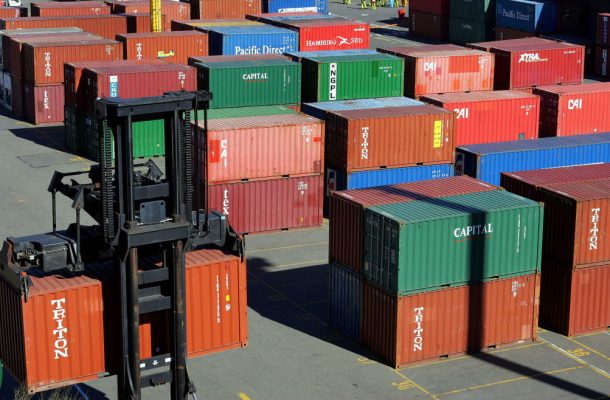Don’t underestimate Australia-US trade relations

The idea that Australia faces a tension between its security alliance with the United States and its economic relationship with China overlooks the importance of its economic relationship with the United States.
While China far outstrips the US in the value of its trade with Australia, the US is much more important as a source of and destination for investment and capital flows.
Even with trade, there’s a complexity and sophistication to the goods and services transacted in both directions that is distinct from the Chinese trade relationship, which, though it includes exports of high-value education services, is dominated by exports of primary goods and imports of consumer goods.
Australia’s economic relationship with the United States is receiving fresh focus. The 15th anniversary of the Australia–United States Free Trade Agreement (AUSFTA) has stimulated two major reports and a US Studies Centre webinar bringing together former US trade representative Robert Zoellick; former Australian prime minister John Howard; the leading US negotiator in the Trans-Pacific Partnership, Wendy Cutler; and three Australian ambassadors to the US, Michael Thawley, Joe Hockey and incumbent Arthur Sinodinas.
The Howard and George W. Bush governments conceived of AUSFTA as a means of strengthening the security alliance between the two nations.
Zoellick, who led the US negotiations on the agreement, commented last week that ‘the idea was that, for the future, it was important to have an economic partnership foundation for the security ties’.
Zoellick said the aim of AUSFTA was to ‘deepen and extend the network of economic ties’. Lowering tariffs was important, but the real gains were to be won from the investment in each other’s markets, bringing innovation and strengthening links between the two peoples.
As an agreement between two advanced nations, it was a ‘demonstration of a particularly intimate relationship’, Howard said.
‘The trade scene around the world has ebbed and flowed and been volatile and I think, thank heaven we had that relationship, as it not only reinforced the bilateral relationship between the US and Australia, it provided an anchorage for Australia in a difficult trading environment.’
There is evidence for this. Throughout the past 15 years, bilateral trade has prospered in the goods and services with the highest technological and intellectual content. Australia’s exports of manufactured goods to the US have risen by 90% since the free trade agreement took effect, with the biggest gains in products such as aircraft parts, pharmaceuticals and telecommunications equipment.
The US is by far Australia’s largest market for business, financial and IT services. Education and tourism are the only services markets for which China has been the largest customer.
In the other direction, the US is the supplier of the goods and services which contribute to Australia’s status as an advanced country. Australia’s imports from the US include items simply not available elsewhere, including medical instruments, telecommunications and computing equipment, civil engineering plant and analytical tools. The US is by far the largest supplier to Australia of business, financial and intellectual property services, as well as entertainment services.
Much of the bilateral trade is delivered by businesses operating in each other’s country. Affiliates of Australian firms operating in the US had sales in that market of US$57 billion in 2017, while US firms in Australia had sales of US$153 billion.
Australia is much more important as an investment partner of the US than the size of its economy would suggest. US data shows Australia captures 18% of US investment in the Asia–Pacific region, although it represents only 5% of regional GDP. Total US investment in Australia is just under $1 trillion while, in the other direction, Australians have invested $800 billion in the US. The value of the bilateral investment relationship is 10 times greater than that between Australia and China.
Zoellick said the US also saw its free trade agreement with Australian serving regional and global aims. ‘The FTA that we crafted was supposed to be a cutting-edge deal to match the changing international economy. It was deep on services, intellectual property rights, e-commerce, express delivery, environment, labour, transparency, corruption and investment. It went far beyond the WTO standards.
‘We hoped that, based on the example that our two economies set, we could expand it—and that was the Trans Pacific Partnership.’ Zoellick said the expectation was that the TPP would grow beyond its original 12 members to include South Korea and other ASEAN nations. It would have gained leverage over China, including among Chinese reformers on issues such as state-owned enterprises and competitive neutrality.
With President Donald Trump having withdrawn from the TPP, neither Zoellick nor Cutler sees a speedy path back for the US in the event that Joe Biden is successful in November’s presidential election. Zoellick says there are ways Australia could help.
‘If Biden is elected, he’ll have a full plate dealing with the pandemic, economic recovery, racism and global climate change. There is only so much a US president can take on, and that could move the trade agenda back’, he said.
However, he said there would be opportunities for Australia to find ways to connect the domestic agenda with trade. He suggested issues such as biological security in the wake of the pandemic, or environmental cooperation, as areas where domestic policy and international trade interests could connect.
Cutler advised Australia against seeking to update AUSFTA, saying both sides would encounter new trade frictions that would be difficult to work through. However, she said there were opportunities for Australia to deepen bilateral links, for example with the negotiation of a digital trade agreement, modelled on the deal Australia has already sealed with Singapore.
She also urged Australia to join the trade ministers of the US, the European Union and Japan who have been working together on issues raised by trade with China, including technology transfer, industrial subsidies and WTO reform.
This article was published by The Strategist.
David Uren is a Melbourne-based business writer and investor relations advisor. He has been writing about business for the past 25 years for publications including The Australian, The Age and BRW.














